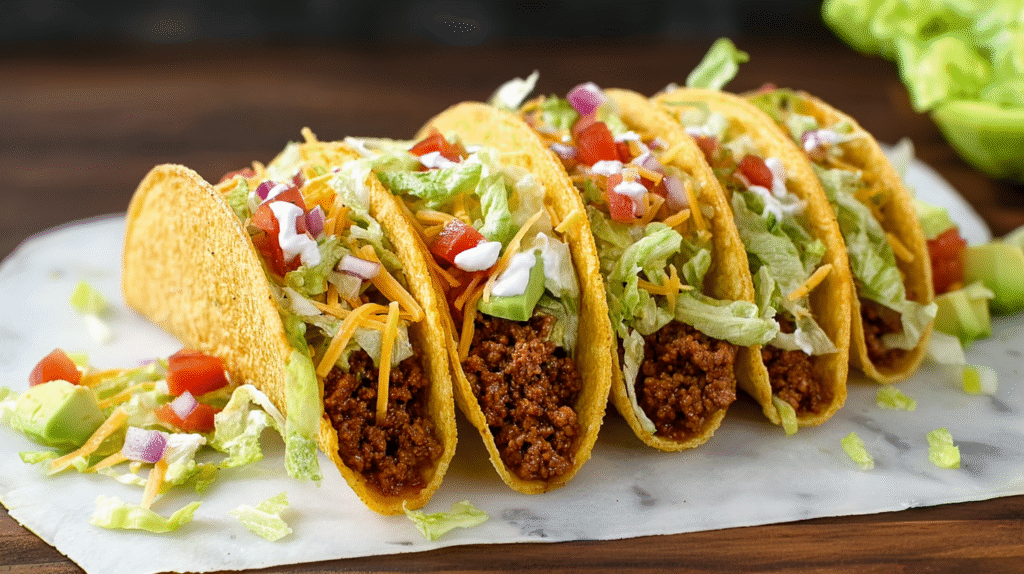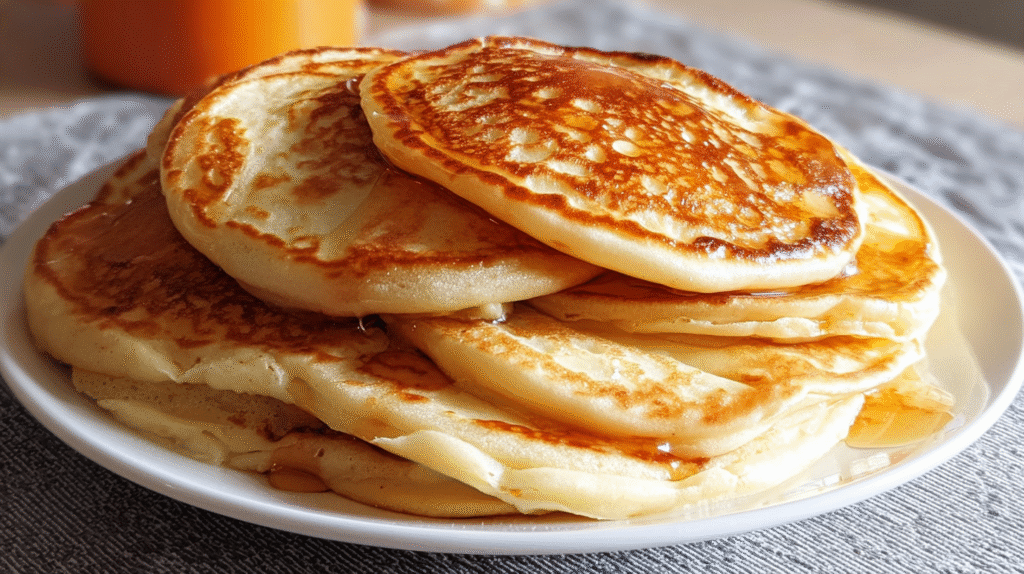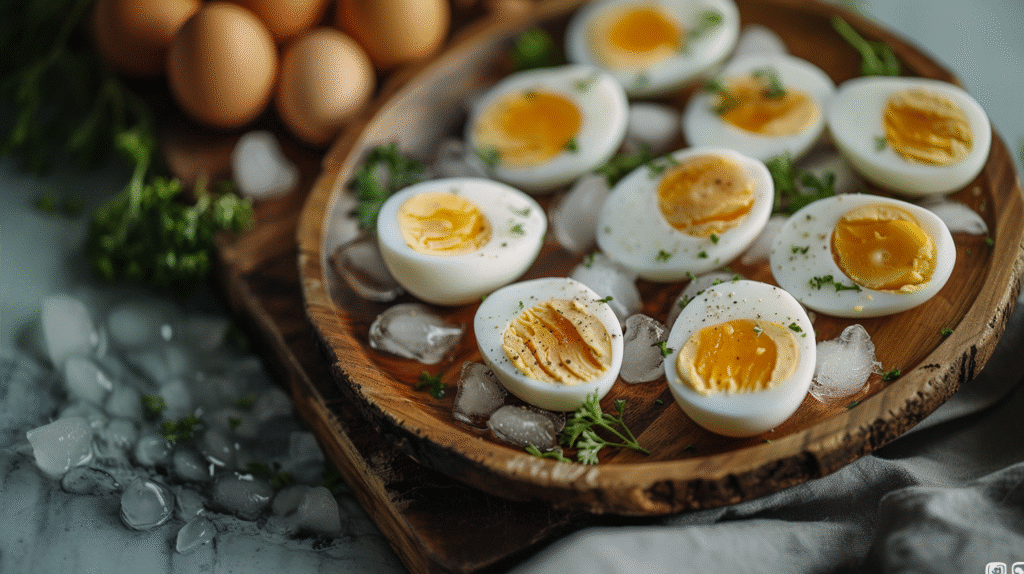Why Hard-Boiled Eggs Are Tricky
Hard-boiled eggs sound simple — boil water, cook eggs, peel, eat. But anyone who has wrestled with shattered shells and cratered whites knows it’s not always that easy. The peeling struggle is real, especially when you’re prepping a dozen eggs for Easter, deviled eggs, or a batch of meal-prep egg salad.
The 5-5-5 method has become a favorite among home cooks because it’s simple, repeatable, and almost foolproof. Using a pressure cooker like the Instant Pot, you can cook, chill, and peel eggs in a way that practically guarantees clean, smooth shells every time.
This guide breaks down everything you need to know — from how the method works to troubleshooting tips, storage suggestions, and creative ways to use your perfectly cooked eggs.
What Is the 5-5-5 Method?
The name is catchy because it’s simple:
-
5 minutes at high pressure
-
5 minutes natural pressure release
-
5 minutes in an ice bath
That’s it. Three easy steps that turn raw eggs into perfectly cooked, easy-to-peel hard-boiled eggs.
Step-by-Step Instructions
Here’s exactly how to do it:
-
Prepare the Pressure Cooker
-
Place a metal trivet or rack in the bottom of your Instant Pot or pressure cooker.
-
Add 240 ml (1 cup) of cold water to the pot.
-
-
Add the Eggs
-
Arrange cold eggs in a single layer on the rack.
-
You can cook anywhere from 1 to 12+ eggs at once.
-
-
Cook at High Pressure
-
Seal the lid and set the cooker to high pressure for 5 minutes.
-
-
Natural Release
-
Let the pressure drop naturally for 5 minutes before manually venting the rest.
-
-
Ice Bath
-
Immediately transfer the eggs to a bowl of ice water.
-
Chill for 5 full minutes to stop cooking and loosen the shells.
-
-
Peel and Enjoy
-
Crack eggs gently on the wider end and peel under a thin stream of running water for best results.
-
The Science Behind Easy-Peel Eggs
Ever wonder why some eggs peel like a dream and others turn into a nightmare? The secret is a combination of pH, temperature, and timing:
-
pH Level of the Whites: As eggs age, the pH of the whites increases, which weakens the bond between the white and the inner membrane. This makes peeling easier.
-
Steam Cooking: Pressure cooking uses steam, which is gentler and penetrates the shell quickly. Unlike boiling water, steam doesn’t jostle the eggs, so they cook evenly and don’t crack as easily.
-
Rapid Chilling: The ice bath causes the egg whites to contract slightly, pulling away from the shell membrane. This is what allows the shells to slip off in large pieces.
Adjustments for Fresh Eggs and Altitude
-
Very Fresh Eggs: Farm-fresh eggs tend to cling more tightly to the membrane. Add one extra minute of pressure cooking (6-5-5) or let the natural release go for 7 minutes.
-
High Altitude Cooking: For every 300 m (1,000 ft) above 600 m (2,000 ft) elevation, add about 5% more cooking time.
Troubleshooting: When 5-5-5 Doesn’t Work
Even with a foolproof method, sometimes things go wrong. Here’s how to fix it:
| Problem | Likely Cause | Fix |
|---|---|---|
| Eggs hard to peel | Very fresh eggs or skipped ice bath | Add 1 min pressure cook time, or let eggs age 5–7 days before cooking |
| Gray-green ring around yolk | Overcooked | Reduce cook time to 4 minutes at pressure or shorten natural release |
| Undercooked yolks | Too little cook time or quick release too soon | Add 1 minute to pressure time or natural release |
| Cracked eggs | No rack or too much water | Always cook on rack and keep water level at 1 cup |
Variations: Adjusting for Perfect Yolks
-
Soft-Boiled / Jammy Eggs: Try 4-5-5 for a slightly runny yolk (perfect for ramen).
-
Medium-Boiled: 5-4-5 will yield just-set yolks with a creamy center.
-
Extra Firm: 6-6-6 gives a fully set yolk, ideal for deviled eggs.
Storage Tips
Once cooled, store eggs unpeeled in the refrigerator for up to 7 days. If you prefer peeling in advance, keep them in a covered container with a damp paper towel to prevent drying out.
Hard-boiled eggs should always be refrigerated promptly and never left at room temperature for more than 2 hours.
Creative Ways to Use Hard-Boiled Eggs
Once you master the 5-5-5 method, you’ll want to use those eggs in as many recipes as possible. Here are some tasty ideas:
-
Classic Deviled Eggs: Mix yolks with mayo, Dijon mustard, and chives.
-
Egg Salad Sandwiches: Add dill pickles and a splash of pickle brine for tang.
-
Protein Snack Packs: Pair eggs with nuts, cheese, and veggies for meal prep.
-
Warm Spinach Salad: Chop eggs and toss with bacon vinaigrette.
-
Gribiche Sauce: A French egg-and-herb sauce to spoon over roasted potatoes.
-
Ramen Bowls: Use jammy 4-5-5 eggs to top your favorite noodle soup.
FAQs: Your 5-5-5 Questions Answered
Do I need an Instant Pot to use 5-5-5?
No. Any electric pressure cooker works. You can even adapt it to stovetop pressure cookers with the same timing.
Can I skip the ice bath?
Technically yes, but you risk overcooking and having hard-to-peel shells. The ice bath is key to perfect texture.
Can I stack eggs in the pressure cooker?
Yes, as long as they sit on a rack and don’t exceed the manufacturer’s max fill line.
Can I steam eggs on the stove instead?
Absolutely. Steam for 10–12 minutes, then shock in ice water. Peeling will be nearly as easy.
Final Thoughts
The 5-5-5 method is popular for a reason: it’s fast, consistent, and eliminates the frustration of stubborn shells. Once you try it, you’ll never go back to boiling eggs the old-fashioned way. Whether you want jammy eggs for ramen or perfectly firm yolks for deviled eggs, a few tweaks make this method endlessly versatile.
Peeling eggs shouldn’t be a battle — and with 5-5-5, it never will be again.




